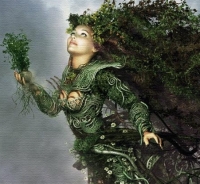Or is it Happy Ishtar?
Yes, it’s true Christians have celebrated Easter Sunday for centuries, as the day of Jesus Christ’s resurrection, the true roots of Easter holiday traditions and activities can be traced back to pagan celebrations. Did you know, the word Easter appears only once in the Bible, and even then it is actually a mistranslation of the Greek word for Passover, the festival that Jesus would have celebrated (as a Hebrew).
That’s why strict Puritans in the past would have nothing to do with Easter, seen as merely a Pagan invention and therefore not a true religeous holiday.
So if Easter isn’t related to Jnesus, where does the word Easter Come from?
There are several theories, but most experts agree that the name Easter comes from Eostre which in turn is a corruption of Astarte, the mother goddess of the ancient Assyrians, also known as Ishtar. Eostre/Ishtar was the goddess of rebirth, and in early times the feast of Eostre/Ishtar took place around the time of the spring equinox, celebrated earth’s resurrection and rebirth.
So how did Christians get involved?
During the 2nd century, early Christians attempting to convert pagan worshippers called their Christian celebration “Ostara” which later became “Easter.”
What about the resurrection of Christ?
Here too, Christians made the decision to incorporate ancient pagan practices into their religion. The general symbolic story of the death of the son (sun) on a cross (the constellation of the Southern Cross) and his rebirth, overcoming the powers of darkness, appears in many myths throughout the ancient world.
There were also plenty of stories of amazing resurrections from the dead. In fact, according to myth, the goddess Ishtar herself was hung naked on a stake, and later resurrected and ascended from the underworld.
Celebrating The Spring Equinox
But for millennia before the Christian religion imposed its beliefs, people were celebrating the spring equinox, possibly the oldest holiday in human culture. For a world tied to the rhythms of nature, the end of winter -a dead, dark season and the beginning of spring, with the rebirth of life- must have been a truly joyful time.
Interestingly, early Christians recognized this and used the spring equinox to determine the Easter date. In 325, the Council of Nicaea decided that Easter would be the first Sunday after the first full moon occurring on or after the March equinox. (Eastern Orthodox churches celebrate Easter on a different date.)
Easter symbols and their meanings and origins
Bunny = fertility
Also the symbol of Ishtar. According to ancient myth, she owned a magic hare that hibernated all winter underground and bounded to life every spring, giving out presents to good children.
Egg = fertility
The egg has represented fertility and restoration for a long time, probably long before our ancestors had any knowledge of sperm and ova. Eggs are perfect symbols of the regeneration that comes with spring.
Cross = phalus
This symbol is so ancient scolars aren’t quite sure when its use began.
Baskets = female fertility
The fertile earth grows the reeds, the reeds are woven into baskets, which then hold eggs. Simply put, Mother earth, womb like basket that holds eggs.
Reserection (rising again) = …Um, I let you draw your own conclutions on that one.
Hot cross- In the Old Testament we see the Israelites baking sweet buns for an idol, and religious leaders trying to put a stop to it. The early church clergy also tried to put a stop to sacred cakes being baked at Easter. In the end, in the face of defiant cake-baking pagan women, they gave up and blessed the cake instead.
So there you have it Easter’s true meaning. So Happy Ishtar!
